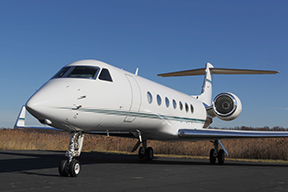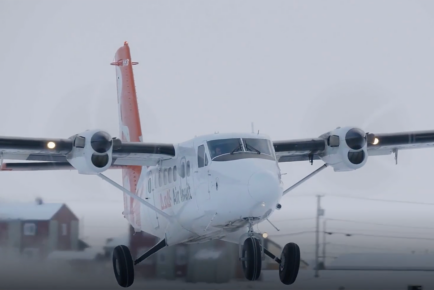
Written by David Dixon, President, Jetcraft Asia
[email protected]
At a recent conference in London, I presented on the subject of business aviation trends in China titled “China – is it slowing down or overhyped.” For this article, I’m going to start where I ended that presentation, expounding on my closing point of why, “Everyone wants a China strategy but everyone needs a regional strategy”.
Watching China Grow
Fifteen years ago no one took China seriously as a market for business aircraft and almost any efforts were often met with incredulity. Fast forward to today, where China is top of the agenda when thinking strategically about Asia. There is good reason for that too, as it offers enormous potential for growth in almost every industry, including business aviation. Today there are more than 120 privately owned aircraft either based or owned in Hong Kong, as well as approximately another 120 aircraft in mainland China. In dollar value terms, the market is dominated by the large long range aircraft.
I have been privileged to witness firsthand the quick path on which the industry has moved in Greater China. I’ve seen private aviation go from being almost nonexistent 15 years ago, to where it is today. In fact, up until the early 1980’s, all visiting jets needed to land in order to take on board a ‘navigator’. This was done to make sure the flight did not stray from its intended route – such was the level of suspicion. Things have really changed since then!
A New Year in China
 You only need to look at what the OEMs are offering in the region and what the local customers are demanding to see that the industry has found its footing here. Today, China is a stable and strong market with a growing acceptance of pre-owned aircraft. This is one of the reasons why Jetcraft set up in Hong Kong, as the first wave of rolling over aircraft has started.
You only need to look at what the OEMs are offering in the region and what the local customers are demanding to see that the industry has found its footing here. Today, China is a stable and strong market with a growing acceptance of pre-owned aircraft. This is one of the reasons why Jetcraft set up in Hong Kong, as the first wave of rolling over aircraft has started.
It is also a market that favors the larger cabin, longer-range aircraft, such as the G550, Global or the Airbus ACJ. That has a lot to do with sheer size and distance in the region. For comparison, Beijing to Singapore is the equivalent of Montreal to Caracas or London to Dakar.
We see the economic growth in China staying comparatively high even if it slows from today’s levels, allowing business aviation to continue expanding for years to come.
The Obstacles Ahead
This optimism is not without its pitfalls, as there are various major issues that hamper the industry. Core amongst them is the infrastructure, which has long been one of the biggest obstacles, along with the constraints on air traffic, airway capacity and the ever-present shadow of the military.
The infrastructure problems stem from a planning process that would never had expected anything like ‘private aviation’. 25 years ago the environment never allowed anything to be ‘private’. Airports were designed without business aviation in mind, certainly not to the scale it is today. Take Hong Kong for example, where the design of their new airport didn’t take into account the growth in the industry over the past 10 years and this lack of foresight is now an obstacle to growth. Keep in mind there are about 150 airports in China compared to the over 5000 in the USA. Some other Asian countries are moving to pick up the slack in infrastructure demands, which I will get into later, but they can only do so much.
The constraint on air traffic and airway capacity has also been a continuing issue, where there is a delicate mix of political and military factors in a ridged structure. The military still regard airspace as their domain and this is not going to change any time soon with the geo-political tensions in the South China Sea. That means there is minimal airspace freed up for business aviation.
 As an industry we need to urge political leaders in the region to recognize these ongoing problems and move to address them. It is not understood that business aviation is a contributor to the economy and a solid part of its growth. Those companies who operate these aircraft are major inbound investors, often in remote regions, who employ thousands of people manufacturing the world’s mobile phones, laptop computers and latest fashion. Those people pay taxes, buy goods, build homes and grow a region’s prosperity. Concrete steps need to be taken to make business aviation an integral part of the growth in infrastructure. We are not a business to be squeezed out through lack of insight, but embraced as a road or railway line.
As an industry we need to urge political leaders in the region to recognize these ongoing problems and move to address them. It is not understood that business aviation is a contributor to the economy and a solid part of its growth. Those companies who operate these aircraft are major inbound investors, often in remote regions, who employ thousands of people manufacturing the world’s mobile phones, laptop computers and latest fashion. Those people pay taxes, buy goods, build homes and grow a region’s prosperity. Concrete steps need to be taken to make business aviation an integral part of the growth in infrastructure. We are not a business to be squeezed out through lack of insight, but embraced as a road or railway line.
However, it’s not all bad. These and other important issues are being openly discussed among industry leaders here. This offers hope that they will be progressively addressed as the market grows.
Looking Beyond the Great Wall
Asia Pacific is the third largest market for private jets, on the heels of the US and fast ramping up behind Europe. That’s not just due to China alone, as the makeup of Asia is diverse, both geographically and economically. The need for individuals and companies to travel and do business within the region, as well outside the confines of the Pacific, make this part of the world a natural fit for business aviation. While the large cabin aircraft dominate the North Asia markets, the markets in Indonesia, Malaysia and the Philippines demand aircraft across the spectrum. Take Indonesia, where there are 13,000 islands with a wide range of natural resources. There, airlinks are vital.
Asia offers potential for growth abound, with the numbers clearly showing an embrace of the industry. In the last two years, over 20 pre-owned aircraft were sold into Australia. Indonesia also remains very active, and in unit terms is probably the largest Asian market. At Jetcraft, most of our new aircraft sales are to clients not just in China, but also from South East Asia. And lets not overlook India, which is also rapidly emerging as a player in the industry. The Indian market is continually growing in ways similar to China, along with many of the same constraints as well.
The growth seen in many parts of Asia is tempered though, as the world’s 3rd biggest economy, Japan, underperforms thanks to a bureaucratic environment that’s unreasonably restrictive to business aviation. But overall, the trajectory had been steadily ticking upward, and you’d be hard pressed to ignore a region where the entry-level aircraft may be a G550 or Global and somewhere like Japan which already has four 650’s operating.
In terms of infrastructure, Asian countries are making great strides. Clark and Subic airports in the Philippines are picking up some of the slack that China has created. Singapore has invested heavily in Seletar Airport, recognizing the role of business aviation not just in Asia but India as well. The Thai government has worked hard to make their former main airport, Don Muang, better suited for business aviation. And both Kuala Lumpur and Jakarta have excellent facilities in Subang and Halim, making them ideal hubs for our industry. That said the standouts of Japan and China could be much better.
Many times the perception is that business aviation needs huge facilities or major investment. Not so. The crucial requirement is the distance from the steps of the jet to the door of the car and the time it takes to get from one to the other. It is ramp space that is needed, not marbled towers run as FBO’s.
A Sound Strategy
As companies continue to look towards Asia, it’s important to have a business aviation strategy in place that takes advantage of the strengths of China and just as importantly the rest of the region. To do this, you need a complete picture of where the market has come from and where it sits today, including understanding what the weaknesses are.
When I began traveling to the region in the early 1980’s my colleagues thought I was crazy seeing the future. The skylines are impressive and can trick the unwary into thinking the potential is unlimited. This is a region in transition. It’s exciting, but there are many experts with much to learn.
SIGN UP FOR OUR MONTHLY JETSTREAM RECAP
Don't miss future Jetstream articles. Sign up for our Jetcraft News mailing list to receive a monthly eblast with links to our latest articles. Click to join the 1,800+ subscribers on our mailing list.






